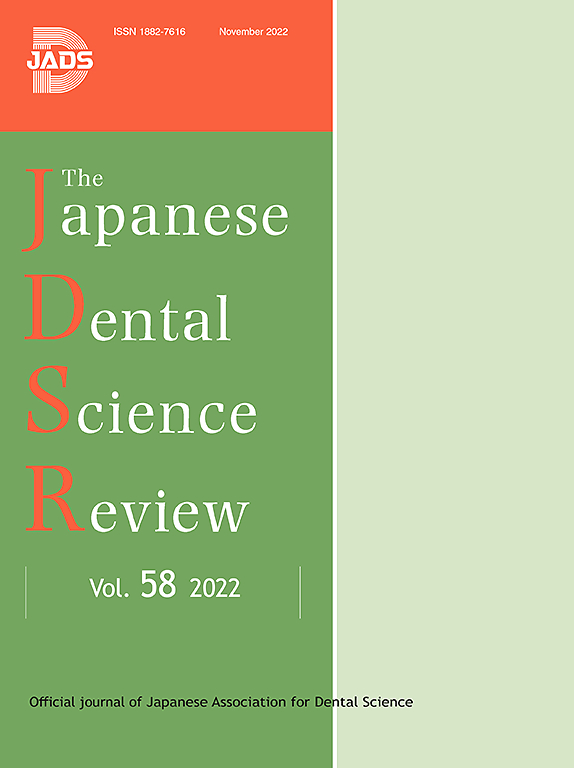Micro- and nano-scale adhesion of oral bacteria to biomaterials using atomic force microscopy: A systematic review
IF 6.6
2区 医学
Q1 DENTISTRY, ORAL SURGERY & MEDICINE
引用次数: 0
Abstract
To evaluate the available evidence regarding in-vitro studies carried out with atomic force microscopy (AFM) to study the adhesion of oral bacteria under the research question: “Which adhesion parameters have been reported for oral bacteria attachment to surfaces following AFM experiments?”
This review was carried out following PRISMA guidelines. The Pubmed, Web of Science and Scopus databases were accessed and original articles reporting in-vitro findings on AFM-based oral bacteria adhesion experiments were included. Study selection and data extraction was performed by two independent researchers. Of the initial 249 screened articles, 24 were included in the final analysis.
Overall, the adhesion of oral bacteria to 12 different biomaterial surface types has been explored with AFM including soft materials, dental materials, and other materials. S. mutans was the most frequently studied bacterial species in its early attachment to biomaterials. Regarding AFM-based adhesion parameters, the maximum adhesion force, adhesion energy, rupture and contour lengths, and number of rupture events between oral bacteria and substrates have been quantified and reported.
Initial oral bacterial attachment to biomaterials is modulated by a range of cell, environmental, and surface-derived properties. Further research is needed to transfer this knowledge into the clinical setting.
用原子力显微镜观察口腔细菌与生物材料的微观和纳米级粘附:系统综述
为了评估利用原子力显微镜(AFM)研究口腔细菌粘附的体外研究的现有证据,研究问题是:“在原子力显微镜实验后,哪些粘附参数被报道为口腔细菌附着于表面?”这项审查是按照PRISMA的指导方针进行的。我们访问了Pubmed、Web of Science和Scopus数据库,并纳入了基于afm的口腔细菌粘附实验的体外实验结果的原创文章。研究选择和数据提取由两名独立研究人员进行。在最初筛选的249篇文章中,有24篇被纳入最终分析。总的来说,用AFM研究了口腔细菌对12种不同生物材料表面类型的粘附,包括软性材料、牙科材料和其他材料。变形链球菌是最常研究的细菌种类,在其早期附着于生物材料。关于基于afm的粘附参数,口腔细菌与底物之间的最大粘附力、粘附能、破裂和轮廓长度以及破裂事件数已被量化并报道。口腔细菌对生物材料的初始附着受到一系列细胞、环境和表面衍生特性的调节。需要进一步的研究将这些知识应用到临床环境中。
本文章由计算机程序翻译,如有差异,请以英文原文为准。
求助全文
约1分钟内获得全文
求助全文
来源期刊

Japanese Dental Science Review
DENTISTRY, ORAL SURGERY & MEDICINE-
CiteScore
9.90
自引率
1.50%
发文量
31
审稿时长
32 days
期刊介绍:
The Japanese Dental Science Review is published by the Japanese Association for Dental Science aiming to introduce the modern aspects of the dental basic and clinical sciences in Japan, and to share and discuss the update information with foreign researchers and dentists for further development of dentistry. In principle, papers are written and submitted on the invitation of one of the Editors, although the Editors would be glad to receive suggestions. Proposals for review articles should be sent by the authors to one of the Editors by e-mail. All submitted papers are subject to the peer- refereeing process.
 求助内容:
求助内容: 应助结果提醒方式:
应助结果提醒方式:


